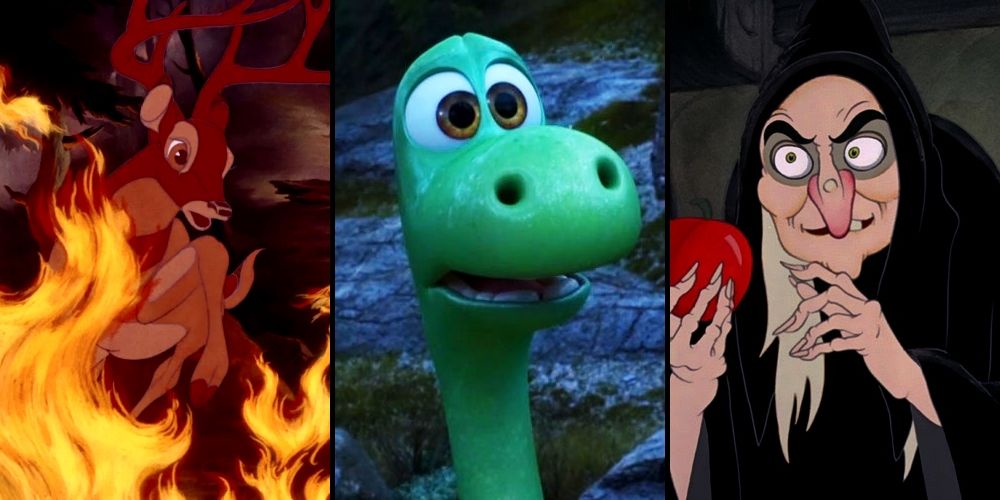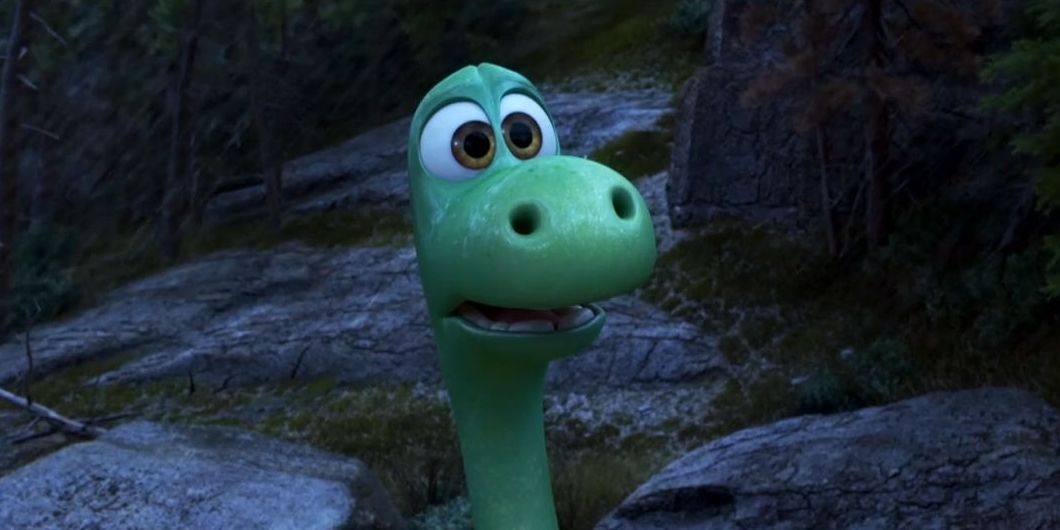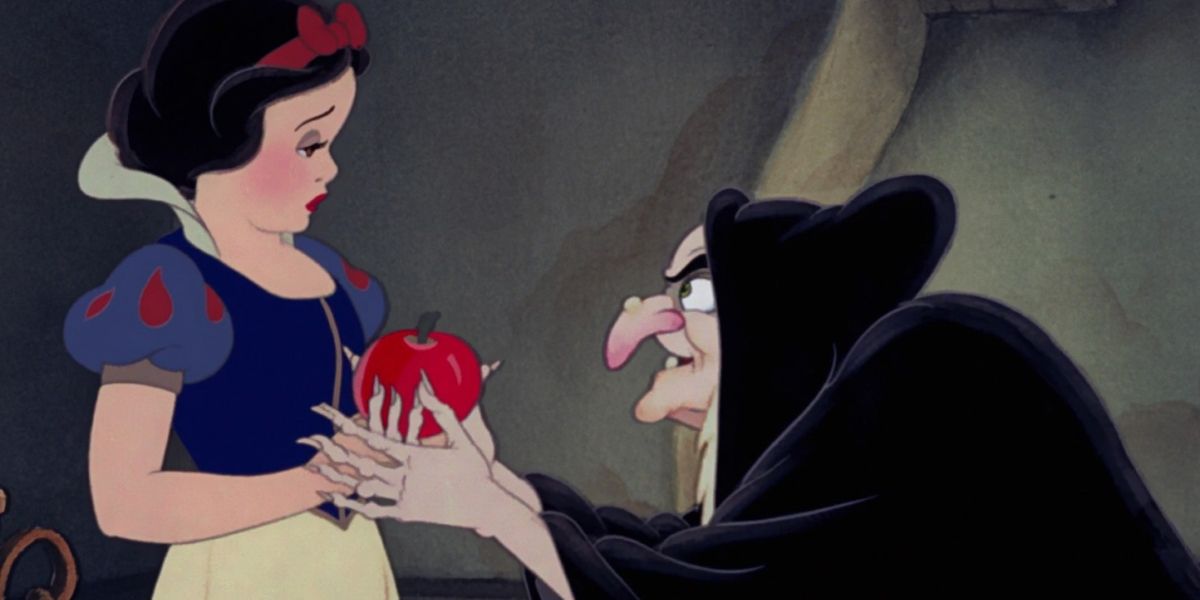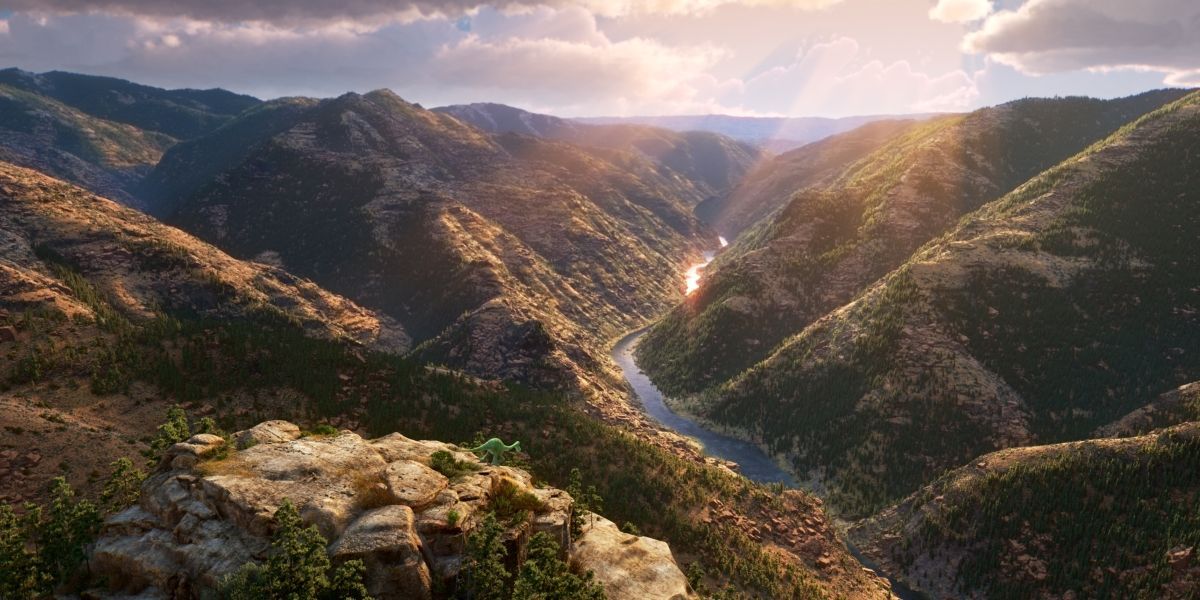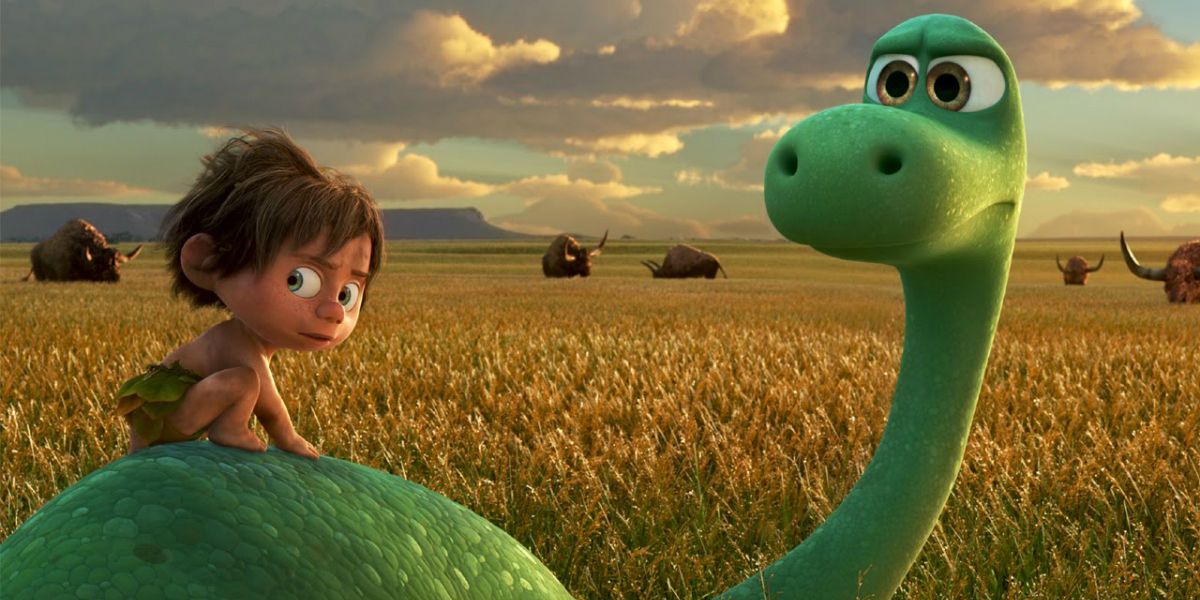It's no secret that we're living in an age when each and every influence on a young mind is under intense scrutiny, with an increase in violence measurable in everything from adventure movies to comic book TV shows. Take personal taste, morals or parenting styles out of the equation, and the fact remains: parents sitting down with their children in front of a movie screen or TV don't quite know what they're in for - but there are exceptions.
For decades, it was Walt Disney who guaranteed stories that weren't just suitable for children or families, but delivered valuable lessons about the world ahead of them. That charge was picked up by Pixar Animation Studios, with movies like Up, Toy Story, Finding Nemo, Inside Out, and nearly every other film the studio has released being just as beneficial to emotional and intellectual "growth." Things got serious, or even dangerous for the main characters, sure, but never dark.
With the studio's next release, The Good Dinosaur, the storytellers are tackling a unique challenge: telling a story for children, about children, without shying away from real danger and threats. According to director Peter Sohn, the team made sure to not only trust their instincts, but remind themselves that Disney movies aren't quite as "wholesome" or sugar-coated as we like to remember.
We had the opportunity to see footage from The Good Dinosaur on a recent trip to Pixar's studios, with Sohn framing the young hero's journey into the wilderness as akin to a child's first time "getting lost in the woods" (for those unlucky enough to have endured the experience). What we saw lived up to that comparison - and then some.
Steering clear of spoilers, the footage began with the sequence advertised in the film's official trailer. Arlo is tossed helplessly away down a raging River, knocked unconscious, and awakens badly bruised in an alien landscape miles away from his upstream home. What followed was a chronicle of Arlo's attempts to navigate the new wilderness in a truly painful and punishing way. Add in the oppressive (but beautiful) environment antagonizing his every step home, and it became clear that the filmmakers weren't pampering their star Apatosaur.
After genuinely cringing out of sympathy, or fearing what may befall Arlo in the next sequence, it was obvious that director Peter Sohn would need to weigh in on what seemed like a departure from a "child-friendly" zone. But Sohn made an unexpected point that will likely strike a chord with older Disney fans:
Before you showed us the footage of the film, you mentioned how your aim was to convey the feeling of being lost in the woods for the first time. And it was... it wasn't scary exactly, but it definitely felt dangerous. It was a little surprising at first, because I don’t think people expect that from animated Pixar or Disney stories; seeing young heroes injured. But Arlo really is hurt, and learning these harsher realities for the first time. How do you know where to draw that line, knowing families are going to be watching the movie?
Peter Sohn: Well, there were a couple places. There were movies that I grew up with - Bambi, and Snow White - where there are really interesting dangers but also... "Cut her heart out and put it in this box!" And you're like "What is going on?" Bambi’s mother getting shot, the big wildfire at the end of that movie. There are a lot of scary moments. But I remember that they had a great impact on me when I was a kid. Not because they were scary, but because the characters had survived through that and had a resiliency.
So understanding that part of it was something that held on, like, boy… I remember kids are a lot more resilient than I think that they are. And then my own gut of like, as a moviegoer, I’m not into gory movies. I do generally love these types of family movies. This is what I grew up on and I’m so proud to make something like that. So you just try to follow your gut as much as you can and try to honor what the story wants as well.
It's a point worth making, since villains like Snow White's Witch, The Little Mermaid's Ursula, or The Hunchback of Notre Dame's Frollo weren't just scary or terrifying to the minds of children. They were, and still are dark figures driven by motives as malicious and evil as any villain can get. And children didn't need to see them commit acts of violence (using knives, guns, explosions, or sexual assault) to know that they were to be feared.
These days, the critic who claims that such violent or evil acts have no place in children's entertainment - a fair statement - is likely to assume that a Disney/Pixar movie without them isn't likely to unsettle or scare the children watching them. We might argue that that's not giving children enough credit. After all, the exact deeds or end goals of classic Disney villains are much, much more terrifying when viewers are asked to use their imagination - a theory of which The Good Dinosaur takes full advantage.
The woods Arlo is forced to blindly navigate may not be the same haunted forest from Beauty and the Beast, but the result is the same: to Arlo, it's every bit as filled with potential dangers. The odds of actual dangers emerging aren't high, since every member of the team repeated the sentiment that the American wilderness, topography and weather would act as the real antagonist of the film. What makes it dangerous is Arlo's ignorance - or as Sohn might prefer, Arlo's "resiliency" in the face of such unknowns is the real journey.
To be clear, The Good Dinosaur isn't meant to instill fear of the wilderness. Instead, the indifference to Arlo and his fellow creatures that the landscape, rock, water and wood exhibits is what makes it something to be feared, but also admired (Sohn spoke at great length about his own love and adoration of the American West, drawing from some of the greatest American westerns for this movie's cinematography).
If The Good Dinosaur, like the great epics it is drawing from, is to be largely defined by the sprawling setting, then Arlo's helplessness inside of it helped set up the other lead: Spot, the dog-like human boy who will usher the dinosaur through this brave new world. Determined to defend his master, Spot helped cement the story in place, and gave Sohn and his team just what was needed to find their sought-after balance. The world could be filled with unknown dangers, but Spot and Arlo are able to tackle almost anything:
Peter Sohn: In some of my favorite boy and dog movies - and just what I love about older animation - when you wanted to do a character study, giving time for the character to think about something and holding [camera shots] a little bit longer was just a gut thing in terms of the storytelling... For this one, because this is our first movie about younger characters, I wanted to have Arlo experience things on both ends of the spectrum. Terrified, and "boy, that is dangerous!" But also "wow, that's beautiful," you know?
In fairness, the connections to the less friendly, more foreboding and oppressive days of Disney could purely be our interpretation - an homage that most audiences may never see. And in the context of the larger film, the segments shown may be less jarring.
But if nothing else, The Good Dinosaur may state plainly what other Pixar films have all suggested: in today's world of supreme concern for every child's tender sensibility, a movie without a little terror is probably a movie with little message to send.
Next: How The Good Dinosaur Became a Love Letter to Hollywood's Golden Age
The Good Dinosaur opens in U.S. theaters on November 25th, 2015. Stay tuned for more coverage and interviews from the production team!

